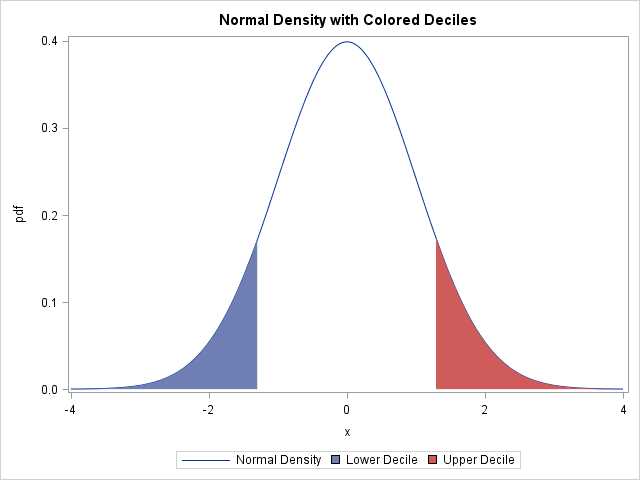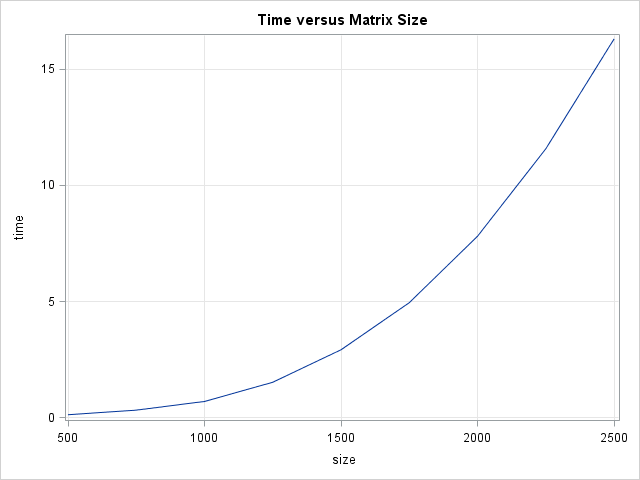The DO Loop
Statistical programming in SAS with an emphasis on SAS/IML programs
A SAS programmer wanted to plot the normal distribution and highlight the area under curve that corresponds to the tails of the distribution. For example, the following plot shows the lower decile shaded in blue and the upper decile shaded in red. An easy way to do this in SAS

As my colleague Margaret Crevar recently wrote, it is useful to know how long SAS programs take to run. Margaret and others have written about how to use the SAS FULLSTIMER option to monitor the performance of the SAS system. In fact, SAS distributes a macro that enables you to

SAS/IML software is used by many SAS programmers, primarily for creating custom algorithms and macros that implement statistical analyses that are not built into any SAS procedure. I know that PROC IML is used regularly by pharmaceutical companies, by the financial and insurance industries, and by researchers in medical colleges

When I am computing with SAS/IML matrices and vectors, I often want to label the columns or rows so that I can better understand the data. The labels are called headers, and the COLNAME= and ROWNAME= options in the SAS/IML PRINT statement enable you to add headers for columns and

One of the fundamental principles of computer programming is to break a task into smaller subtasks and to modularize the program by encapsulating each subtask into its own function. I have written many blog posts over the years about how to define and use functions in the SAS/IML language. I

A feature of SAS/IML 13.2 (shipped with SAS 9.4m2, Aug 2014) is the ability to execute SAS/IML statements that are in a file. The feature is implemented by the new EXECUTEFILE subroutine. This feature is similar to the CALL EXECUTE statement. The difference is that the EXECUTEFILE subroutine reads, parses,
